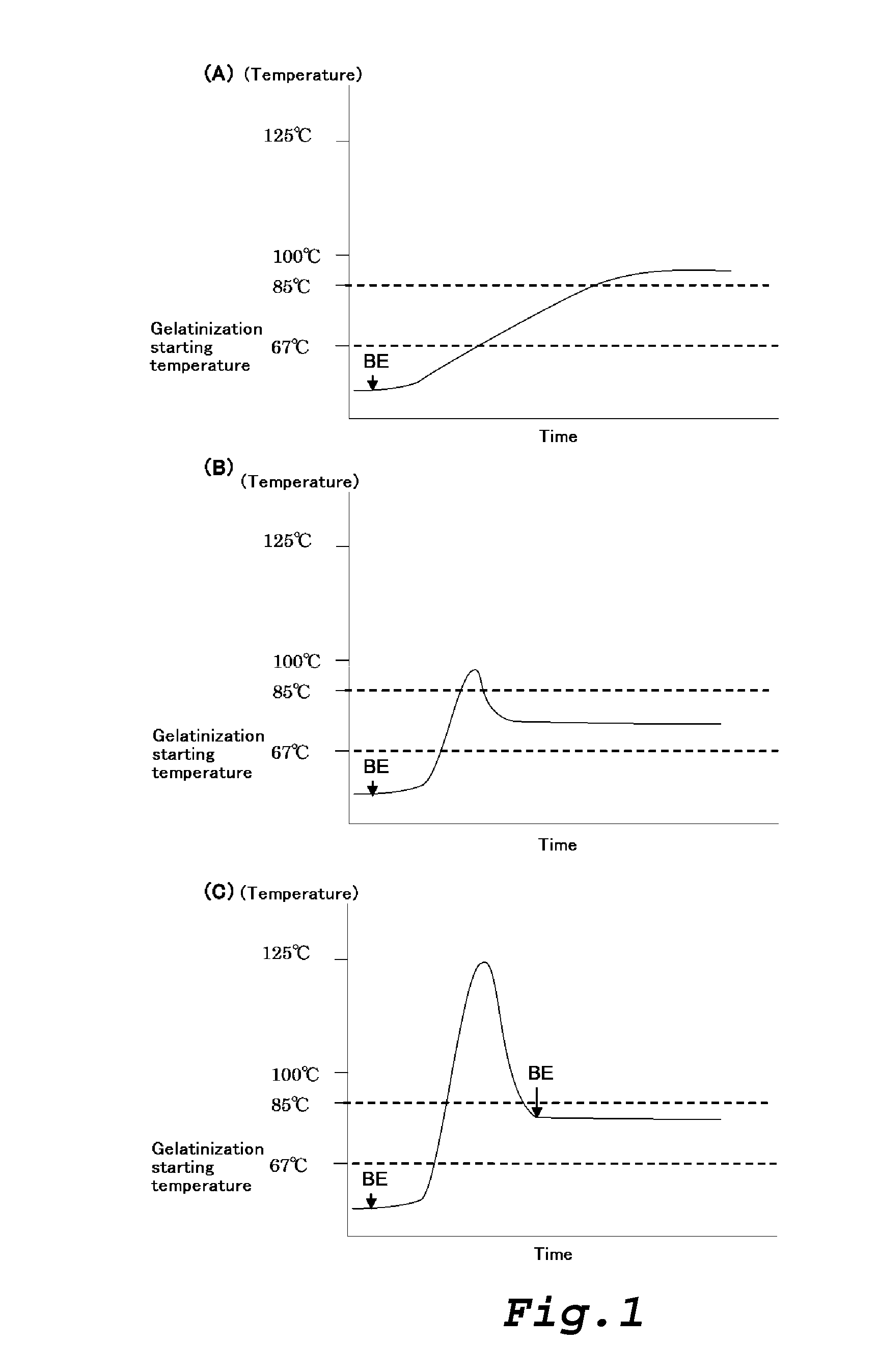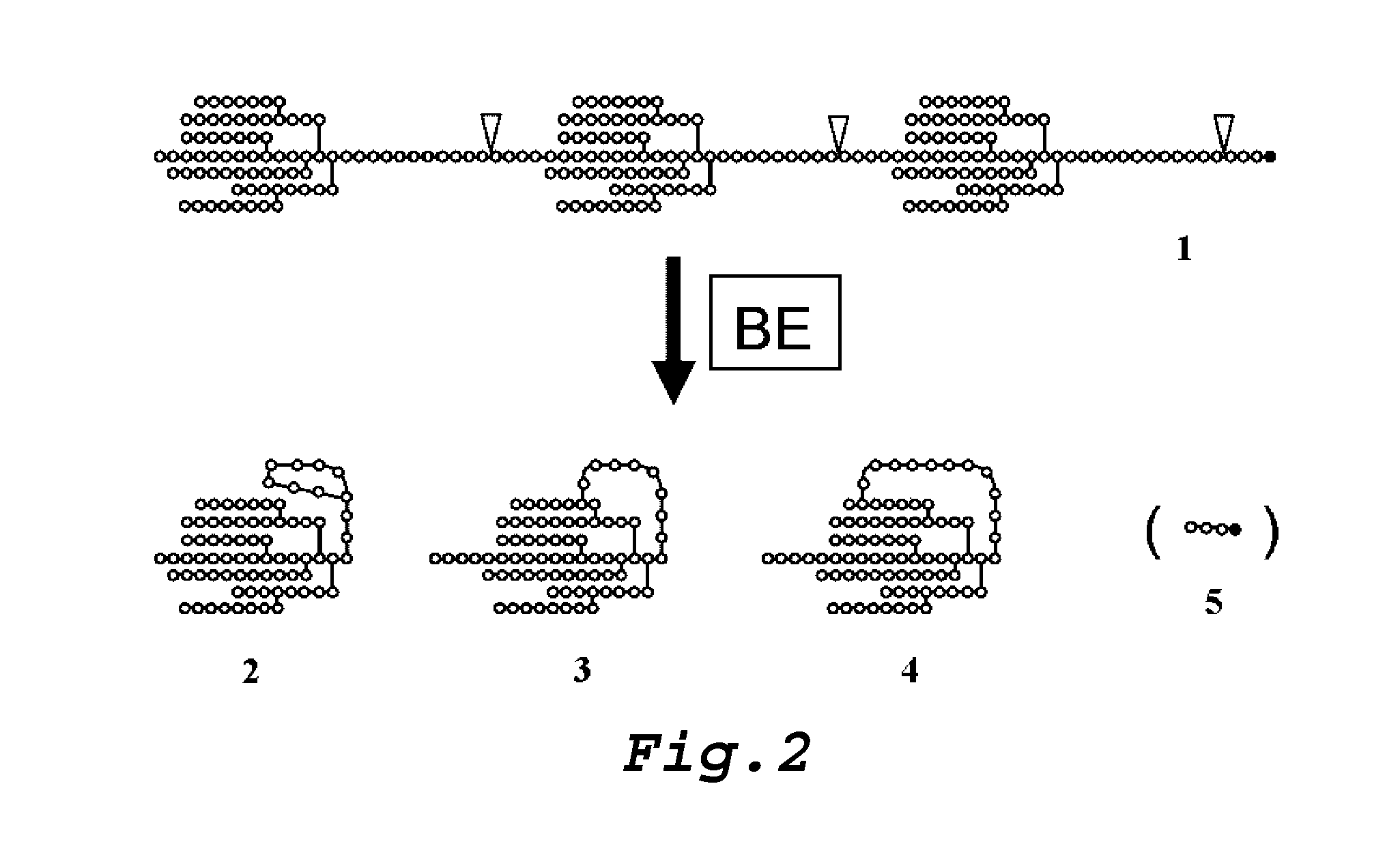Method for industrially producing cyclic-structure-containing branched glucan
a technology of branched glucan and cyclic structure, which is applied in the direction of glycosyltransferases, transferases, fermentation, etc., can solve the problems of inability to ensure flowability, inability to achieve industrially practicable working steps, and inability to transport starch solutions for performing enzymatic reactions to the reaction vessel, etc., and achieves unnecessary new equipment investment.
- Summary
- Abstract
- Description
- Claims
- Application Information
AI Technical Summary
Benefits of technology
Problems solved by technology
Method used
Image
Examples
production example 1
Production of Aquifex Aeolicus-Derived be (AqBE)
[0162]From an Escherichia coli TG-1 strain possessing recombinant plasmid pAQBE1 described in Production Example 1 of Japanese Laid-Open Publication No. 2008-95117, an enzyme liquid containing AqBE having an amino acid sequence of SEQ ID NO: 2 was obtained by the method described in the same patent document.
production example 2
Production of Rhodothemus Obamensis-Derived be (RhBE)
[0163]From an Escherichia coli TG-1 strain possessing recombinant plasmid pRBE1 described in Production Example 5 of Japanese Laid-Open Publication No. 2008-95117, an enzyme liquid containing RhBE having an amino acid sequence of SEQ ID NO: 4 was obtained by the method described in the same patent document.
example 1
Production of Branched Glucan Having Cyclic Structure, Wherein the Reaction Temperature of Second Step was at 85° C.
[0176]50 g of commercially available waxy corn starch was suspended in 1 L of a 30 mM of citrate buffer (pH 6.7), and 0.15 ml (6000 U / g substrate) of the AqBE enzyme liquid obtained in Production Example 1 was added to this suspension at 50° C. The suspension was allowed to react at 70° C. for 6 hours with stirring, and then the temperature was raised to 85° C. and the suspension was allowed to react for 1 hour. At that time, the reaction mixed liquid had high transparency, and retained sufficient flowability. Further, the reaction mixed liquid was allowed to react at 70° C. for 16 hours. The reaction mixed liquid was heated at 100° C. for 20 minutes. Then it was centrifuged at 6,500 rpm for 10 minutes, and the supernatant was filtered with a membrane having a pore diameter of 0.8 p.m. A 2-fold amount of ethanol was added to the filtrate to allow precipitate to be gene...
PUM
| Property | Measurement | Unit |
|---|---|---|
| temperature | aaaaa | aaaaa |
| temperature | aaaaa | aaaaa |
| temperature | aaaaa | aaaaa |
Abstract
Description
Claims
Application Information
 Login to View More
Login to View More - R&D
- Intellectual Property
- Life Sciences
- Materials
- Tech Scout
- Unparalleled Data Quality
- Higher Quality Content
- 60% Fewer Hallucinations
Browse by: Latest US Patents, China's latest patents, Technical Efficacy Thesaurus, Application Domain, Technology Topic, Popular Technical Reports.
© 2025 PatSnap. All rights reserved.Legal|Privacy policy|Modern Slavery Act Transparency Statement|Sitemap|About US| Contact US: help@patsnap.com


